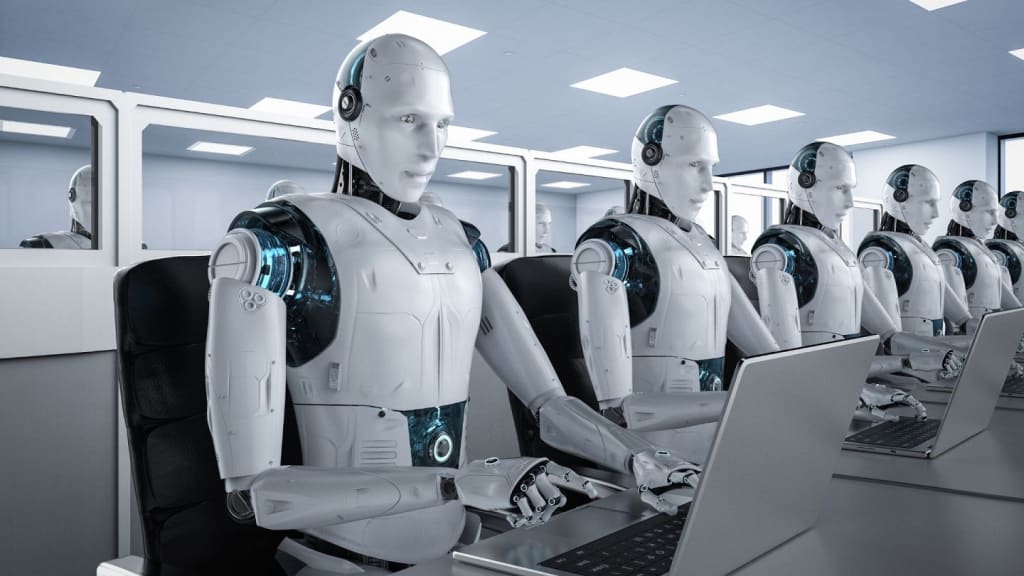
In a world where robots are taking over, the University of Sydney Business School has predicted that within the next decade, companies are likely to hire digital humans.
That's right, say goodbye to your human colleagues and hello to their digital counterparts who never tire, never complain, and always follow company policy (talk about the perfect employee!).
But what exactly is a digital human, you ask?
Well, it's a combination of artificial intelligence tools and a computer-generated avatar that can interact with people in real time, producing realistic human speech and facial expressions.
From Siri to ChatGPT, most of us have already experienced interacting with artificial intelligence, but digital humans take this to a whole new level by overlaying it with realistic visual effects that would give Hollywood blockbusters a run for their money.
The Four Types of Digital Humans
According to researchers, digital humans can be grouped into four categories.
First up, we have the virtual agent that serves multiple users for specific one-time tasks, like customer service.
Then, there's the virtual assistant who supports the user regularly with a specific task, such as shopping or physical therapy.
Thirdly, the virtual influencer who supplies their followers with non-customized content to market products or experiences.
And last but not least, the virtual companion who develops a close relationship with the user, based on interaction for its own sake, but can also assist with tasks such as reminding users to take their medication.
Benefits of having AI robots as colleagues
Round-the-clock productivity: One of the biggest advantages of having AI robots as colleagues is their ability to work continuously, 24/7, without the need for breaks or rest. This means that tasks can be completed faster, and businesses can operate more efficiently, leading to increased productivity.
No human bias: Humans are naturally biased, and this can sometimes affect decision-making in the workplace. AI robots, on the other hand, make decisions based on data and algorithms, eliminating the potential for human bias. This can lead to fair and more objective decision-making.
Ability to analyze large data sets: AI robots are capable of analyzing vast amounts of data in a short amount of time. This can be particularly useful in industries such as finance, where large amounts of data need to be analyzed quickly to make informed decisions.
Ability to learn and adapt: AI robots can be programmed to learn and adapt to new situations, making them more effective over time. This means that they can continuously improve their performance, leading to better outcomes for businesses.
Concerns surrounding AI robots as colleagues
Job displacement: One of the main concerns with the integration of AI robots into the workforce is the potential for job displacement. As AI robots become more advanced, they may be able to perform tasks that were previously done by humans, leading to job losses.
Lack of emotional intelligence: AI robots lack the emotional intelligence that humans possess, making them less effective in certain roles, such as customer service or jobs that require empathy.
Potential for bias: While AI robots can eliminate human bias, they can also be programmed with bias. This is a concern as it can lead to unfair and discriminatory decision-making.
Privacy concerns: AI robots can collect and store vast amounts of data, leading to privacy concerns. It is important that businesses ensure that data collected by AI robots is secure and used in an ethical and responsible manner.
Why Digital Humans Will Never Replace the Real Thing...Yet
Despite their promise and broad applications, the researchers don't believe digital humans will replace real human beings in any industry.
As realistic and lifelike as a digital human may seem, ultimately it is never 'thinking' and lacks any true understanding of what is being communicated.
Its greatest advantage over existing AI technology is also its ultimate limitation: our own innate desire for face-to-face human interaction.
So, there you have it, folks - the rise of the digital employee is coming, but for now, they can only do so much. Who knows, maybe one day we'll all be working alongside digital coworkers, but until then, it's time to appreciate the real, flesh-and-blood colleagues we have...even the ones who complain and ask for raises.
About the Creator
Jamu Lim
I am a writer. I am a human being who writes. Sometimes people call me a novelist, but that’s not really accurate. I’ve written short stories and poetry, but I would classify myself more as a storyteller.






Comments (1)
Great insight. Keep Writing and sharing your talent. If you're interested, I also write articles on Business, Marketing, and Self-Help, and I would be thrilled if you checked them out.